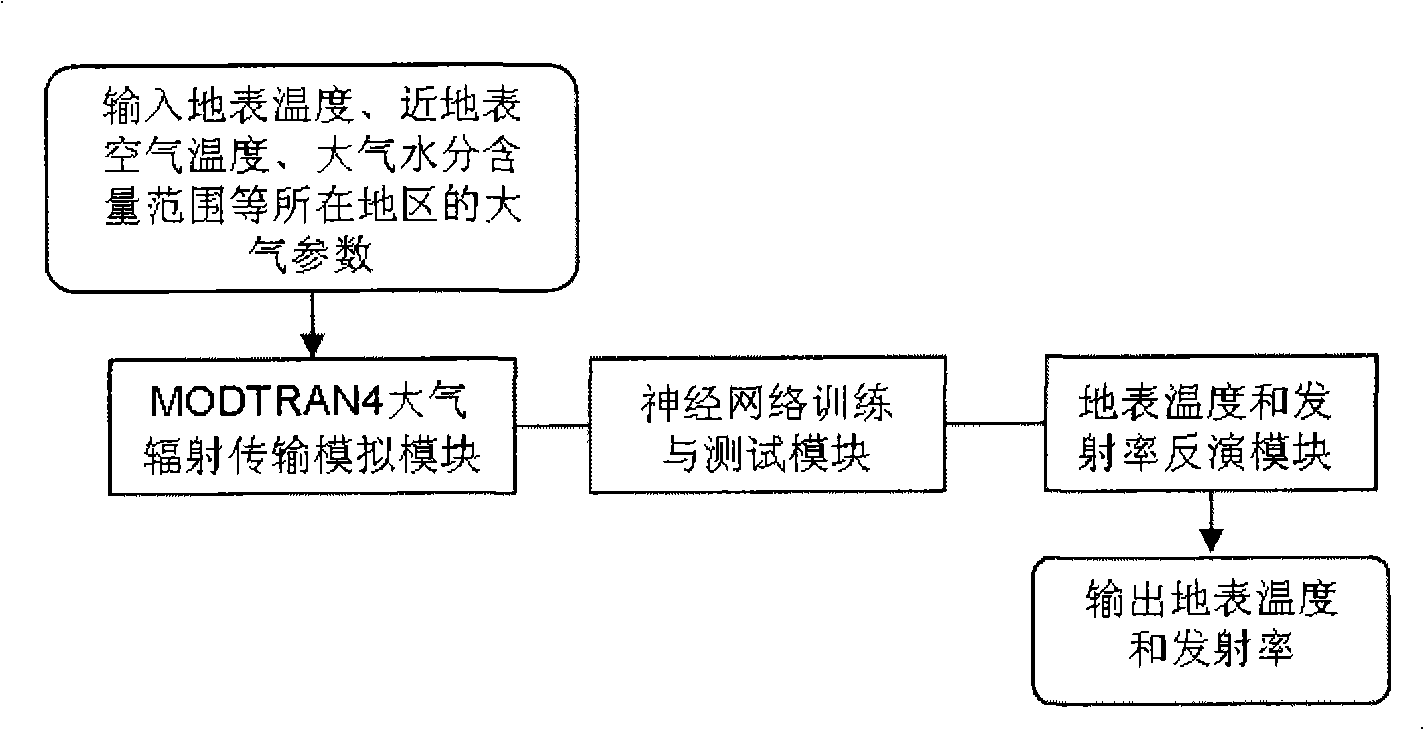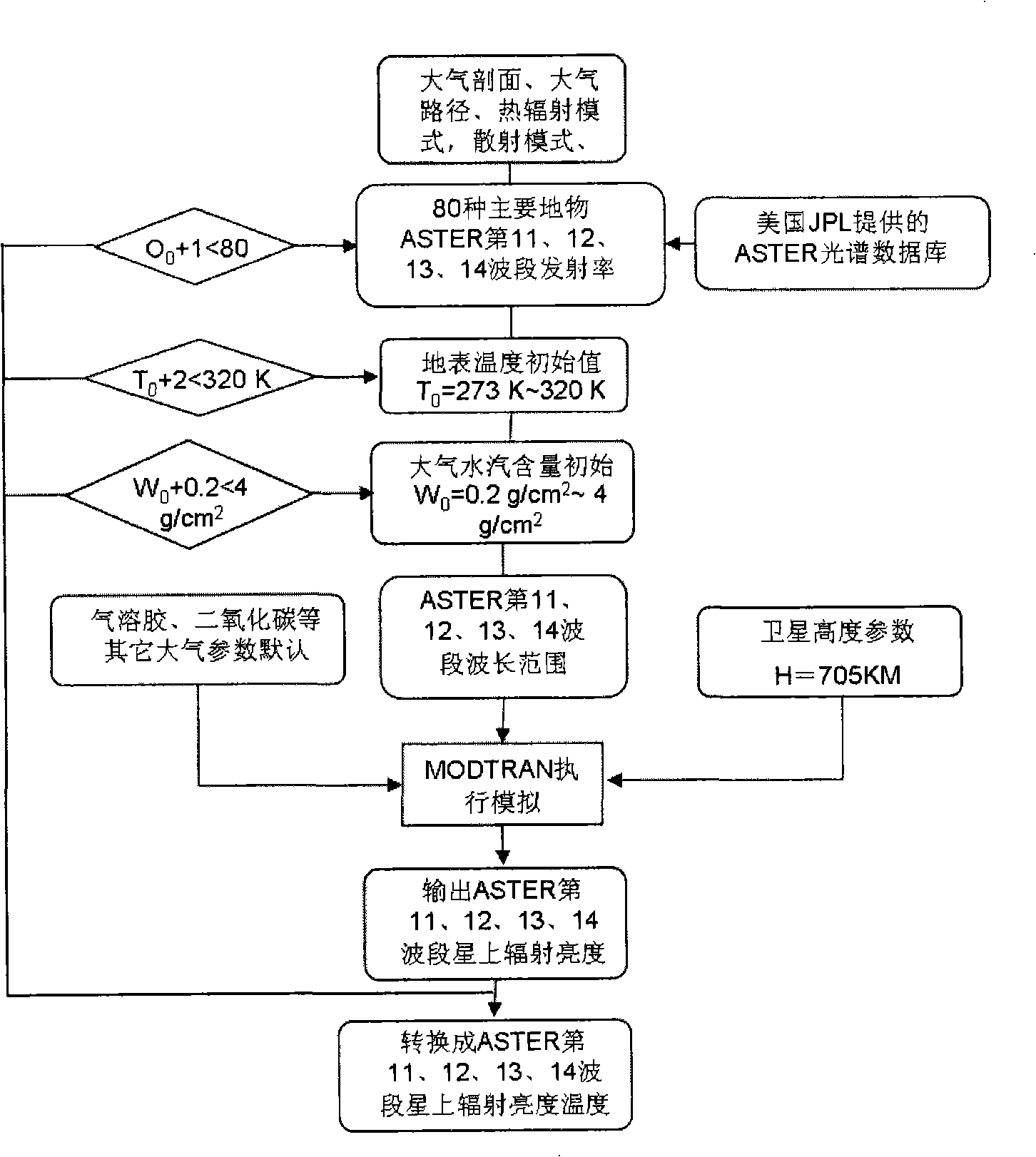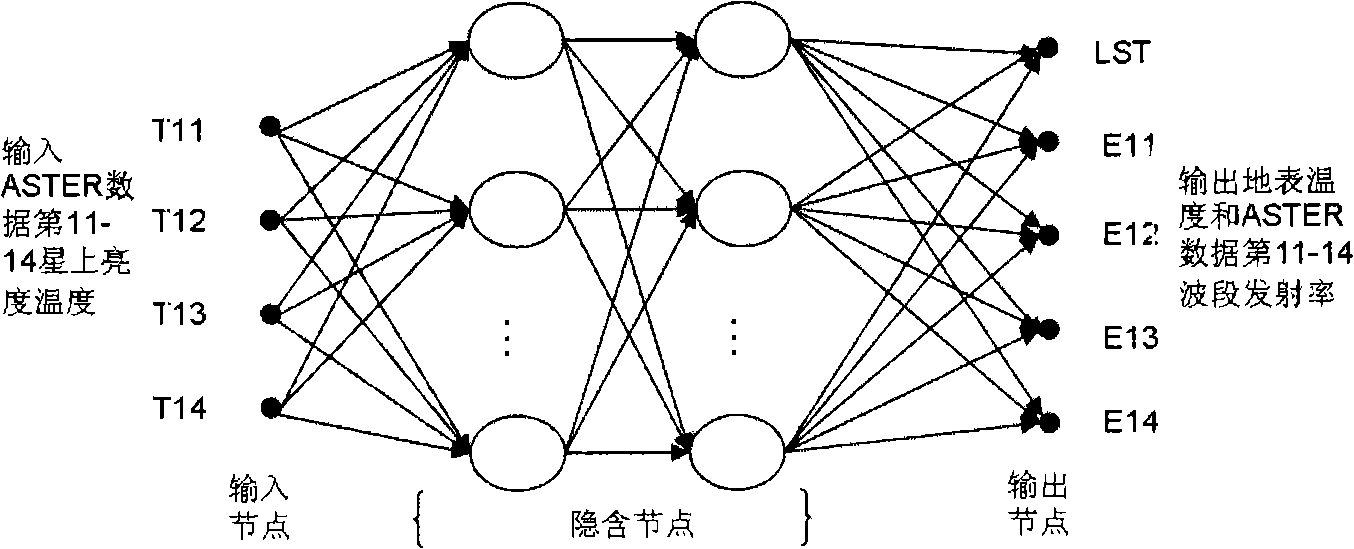Method for ground surface temperature and emissivity inversion by remote sensing data ASTER
A technology of surface temperature and remote sensing data, applied in the direction of using re-radiation, ICT adaptation, electromagnetic wave re-radiation, etc., to achieve the effect of improving technical support, simple operation and reducing unknowns
- Summary
- Abstract
- Description
- Claims
- Application Information
AI Technical Summary
Problems solved by technology
Method used
Image
Examples
Embodiment Construction
[0046] The surface temperature inversion is based on the surface heat radiation conduction equation, that is, the surface temperature is inverted by establishing an energy balance equation. The radiative transfer equation describes the total intensity of radiation observed by the satellite's microwave radiometer, not only from the surface, but also from the atmosphere on its upward and downward paths. In the process of passing through the atmosphere to the remote sensor, these radiation components are also reduced by the absorption effect of the atmosphere. At the same time, the radiation from the surface and the atmosphere also has a non-negligible impact in this process. The inversion formula of surface temperature can be simplified as Equation 1:
[0047] B i (T i )=ε i (θ)τ i (θ)B i (T s )+[1-τ i (θ)][1+(1-ε i (θ))τ i (θ)]B i (T ia ) (Formula 1)
[0048] In formula 1: τ i (θ) represents the transmittance of the i-band (i is the 10th, 11th, 12th, 13th, and ...
PUM
 Login to View More
Login to View More Abstract
Description
Claims
Application Information
 Login to View More
Login to View More - R&D
- Intellectual Property
- Life Sciences
- Materials
- Tech Scout
- Unparalleled Data Quality
- Higher Quality Content
- 60% Fewer Hallucinations
Browse by: Latest US Patents, China's latest patents, Technical Efficacy Thesaurus, Application Domain, Technology Topic, Popular Technical Reports.
© 2025 PatSnap. All rights reserved.Legal|Privacy policy|Modern Slavery Act Transparency Statement|Sitemap|About US| Contact US: help@patsnap.com



